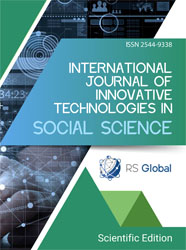ULTRASOUND-GUIDED HYDRODILATATION VS INTRA-ARTICULAR CORTICOSTEROID INJECTION FOR PRIMARY ADHESIVE CAPSULITIS: A RAPID REVIEW OF CLINICAL EFFECTIVENESS AND IMPLEMENTATION CONSIDERATIONS
Abstract
Background: Primary adhesive capsulitis (frozen shoulder) causes pain and restricted range of motion (ROM). Two common injection strategies are hydrodilatation (HD) and intra-articular corticosteroid injection (IACI), yet their comparative effectiveness remains uncertain.
Objective: To rapidly synthesize randomized evidence and recent reviews comparing HD versus IACI in adults with primary adhesive capsulitis, focusing on pain, ROM (especially external rotation), patient-reported outcomes (PRO), and safety.
Methods: We conducted a rapid review (2018–2025) of PubMed, PubMed Central, Europe PMC, and Google Scholar. Eligible studies were randomized controlled trials (RCTs) and systematic reviews/meta-analyses (SR/MA) directly comparing HD with IACI. Primary outcomes were pain (VAS/NRS) and ROM; secondary outcomes were PRO (SPADI/ASES/DASH) and adverse events. Risk of bias was assessed using RoB 2 (RCTs) and a condensed AMSTAR-2 (SR/MA). We performed a narrative synthesis and reproduced pooled estimates reported in SR/MA.
Results: Searches identified 72 records; 60 remained after deduplication; 6 full-texts were assessed and 6 studies were included (3 SR/MA; 3 RCTs). SR/MA suggested short-term advantages of HD—particularly for disability and external rotation—whereas head-to-head RCTs reported no added benefit of HD over IACI and, in one trial, better early outcomes with IACI alone. Longer-term differences (≥6 months) were not consistent. Adverse events were infrequent and mild. SR/MA credibility was moderate; RCTs were at some concerns or high risk of bias.
Conclusions: Evidence is inconsistent; durable superiority of either HD or IACI is unproven. Practically, IACI plus structured rehabilitation is a reasonable first-line choice; image-guided HD may be reserved for selected patients with predominant stiffness or inadequate response. Standardized, well-powered RCTs with harmonized HD parameters and core outcomes are needed.
References
Millar, N. L. (2022). Frozen shoulder. Nature Reviews Disease Primers, 8(1), 59. https://doi.org/10.1038/s41572-022-00386-2
Date, A. (2020). Frozen shoulder: Overview of clinical presentation and review of the current evidence base for management strategies. Future Science OA, 6(10), FSO647. https://doi.org/10.2144/fsoa-2020-0145
Kraal, T. (2020). The puzzling pathophysiology of frozen shoulders – a scoping review. Journal of Experimental Orthopaedics, 7(1), 91. https://doi.org/10.1186/s40634-020-00307-w
Cho, C. H. (2018). Biological Aspect of Pathophysiology for Frozen Shoulder. BioMed Research International, 2018, 7274517. https://doi.org/10.1155/2018/7274517
Picasso, R. (2023). Adhesive Capsulitis of the Shoulder: Current Concepts on the Diagnostic Work-Up and Evidence-Based Protocol for Radiological Evaluation. Diagnostics, 13(22), 3410. https://doi.org/10.3390/diagnostics13223410
Zappia, M. (2016). Multi-modal imaging of adhesive capsulitis of the shoulder. Insights into Imaging, 7(3), 365–371. https://doi.org/10.1007/s13244-016-0491-8
Fields, B. K. K. (2019). Adhesive capsulitis: review of imaging findings, pathophysiology, clinical presentation, and treatment options. Skeletal Radiology, 48(8), 1171–1184. https://doi.org/10.1007/s00256-018-3139-6
Pandey, V. (2021). Clinical Guidelines in the Management of Frozen Shoulder: An Update! Indian Journal of Orthopaedics, 55(2), 299–309. https://doi.org/10.1007/s43465-021-00351-3
Redler, L. H. (2019). Treatment of Adhesive Capsulitis of the Shoulder. Journal of the American Academy of Orthopaedic Surgeons, 27(12), e544–e554. https://doi.org/10.5435/JAAOS-D-17-00606
Kelley, M. J. (2013). Shoulder Pain and Mobility Deficits: Adhesive Capsulitis. Journal of Orthopaedic & Sports Physical Therapy, 43(5), A1–A31. https://doi.org/10.2519/jospt.2013.0302
Le, H. V. (2017). Adhesive capsulitis of the shoulder: review of pathophysiology and current clinical treatments. Shoulder & Elbow, 9(2), 75–84. https://doi.org/10.1177/1758573216676786
Vita, F. (2024). Adhesive capsulitis: the importance of early diagnosis and treatment. Journal of Ultrasound, 27(3), 579–587. https://doi.org/10.1007/s40477-024-00891-y
Paruthikunnan, S. M. (2020). Intra-articular steroid for adhesive capsulitis: does hydrodilatation give any additional benefit? A randomized control trial. Skeletal Radiology, 49(5), 795–803. https://doi.org/10.1007/s00256-019-03316-8
Poku, D. (2023). Efficacy of hydrodilatation in frozen shoulder: a systematic review and meta-analysis. British Medical Bulletin, 147(1), 121–147. https://doi.org/10.1093/bmb/ldad018
Catapano, M. (2018). Hydrodilatation With Corticosteroid for the Treatment of Adhesive Capsulitis: A Systematic Review. PM&R, 10(6), 623–635. https://doi.org/10.1016/j.pmrj.2017.10.013
Zhang, J. (2021). Comparative Efficacy and Patient-Specific Moderating Factors of Nonsurgical Treatment Strategies for Frozen Shoulder: An Updated Systematic Review and Network Meta-analysis. The American Journal of Sports Medicine, 49(6), 1669–1679. https://doi.org/10.1177/0363546520956293
Swaroop, S. (2023). Intra-articular Steroid alone vs Hydrodilatation with intra-articular Steroid in Frozen Shoulder – A Randomised Control Trial. Malaysian Orthopaedic Journal, 17(1), 34–39. https://doi.org/10.5704/MOJ.2303.005
Nasiri, A. (2025). A Comparative Study Between Hydrodilatation and Intra-Articular Corticosteroid Injection in Patients with Shoulder Adhesive Capsulitis: A Single-Blinded Randomized Clinical Trial. Journal of Pain and Palliative Care Pharmacotherapy, 39(2), 286–296. https://doi.org/10.1080/15360288.2024.2446284
Views:
0
Downloads:
0
Copyright (c) 2025 Zbigniew Klimek, Kamil Nieroda, Olaf Jadanowski, Piotr Misiorek, Michalina Pastuszka, Maciej Albrzykowski, Anna Albrzykowska, Mikołaj Jakubowski

This work is licensed under a Creative Commons Attribution 4.0 International License.
All articles are published in open-access and licensed under a Creative Commons Attribution 4.0 International License (CC BY 4.0). Hence, authors retain copyright to the content of the articles.
CC BY 4.0 License allows content to be copied, adapted, displayed, distributed, re-published or otherwise re-used for any purpose including for adaptation and commercial use provided the content is attributed.











